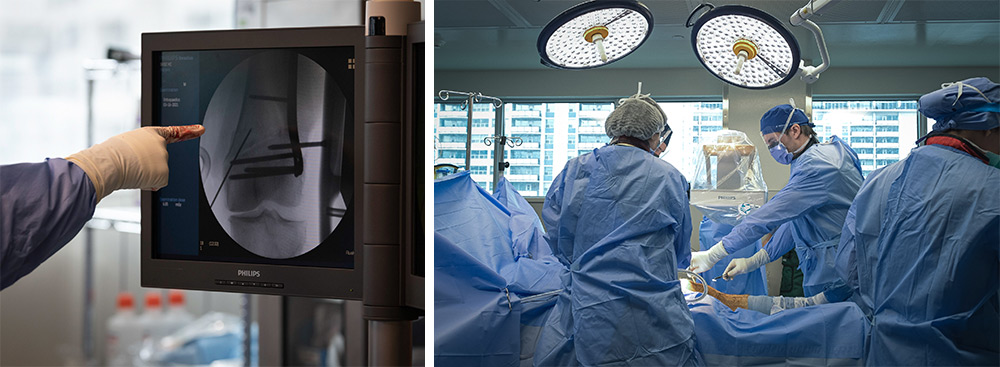Osteotomy
What is an osteotomy?
The term osteotomy comes from the Greek language and means "bone cut." The goal of an osteotomy is to correct the alignment. Osteotomies are mainly used around the knee joint to normalize the load on the joint in order to decrease pain and wear due to overloading.
Who is eligible for an osteotomy?
An osteotomy of the knee joint is mainly used in people with leg malalignment (i.e. bow-leg or knock-kneed). These patients usually develop a one-sided arthritis with damage to the meniscus and articular cartilage because of the resulting overload. Correcting the alignment of the leg helps avoid further damage and improves function. Osteotomies are performed across various age groups.
Why not a partial or full knee replacement?
Maintaining the knee joint is generally preferable to a full or partial replacement, since the natural function of the knee joint is preserved and complications from prosthetic parts does not occur. Since no changes are made in the joint itself, partial or full knee replacement is still possible if required in the future.
How is an osteotomy performed?
Following clinical examination and imaging studies, a detailed deformity analysis is performed using specialized software to determine the optimal alignment and correction. The osteotomy is then digitally simulated and the exact bone cuts are planned and measured. Depending on the analysis, a wedge of bone is either removed (closing osteotomy) or a gap is gradually introduced (opening osteotomy) until the desired correction is achieved. A specially designed metal plate is applied and fixed with screws. The procedure is minimally invasive and performed through a small skin incision.
What happens after surgery?
After surgery, you will stay in hospital for one night. The morning after surgery, you will be taught how to walk with crutches and climb the stairs safely. You are allowed to put weight on your operated leg with the support of crutches, which are discontinued after four to six weeks. Physiotherapy will be required to regain your knee movement and strength. Strenuous physical activities and sports are typically possible after six months.

Location and contact
Schatzker Joint Preservation Initiative for Active Adults
Holland Centre
43 Wellesley Street East
Toronto, ON M4Y 1H1
Hip and Knee Rapid Access Clinic booking number:
416-967-8617
Central intake fax (referrals):
416-599-4577
Toll-free fax:
1-877-411-4577






